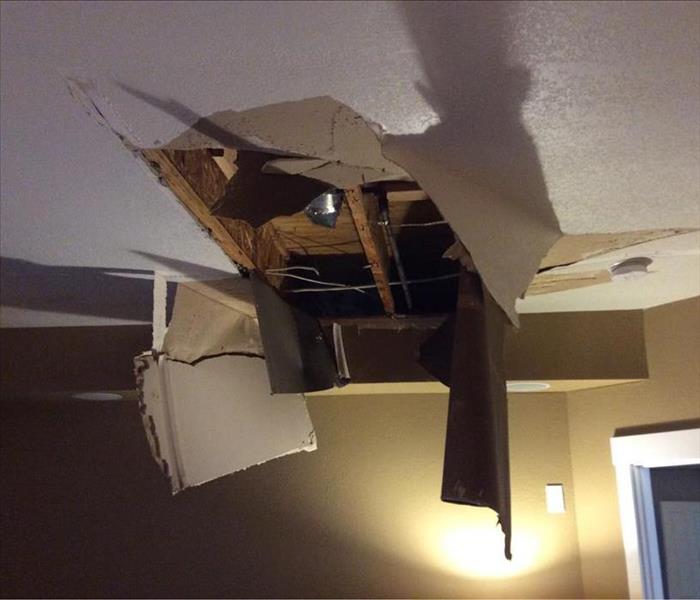Maintenance Tips to Prevent Water Damage
10/16/2023 (Permalink)
Water damage restoration is a major undertaking that requires time, effort, and investment. Once the restoration process is complete and your home is restored to its pre-damaged condition, it's essential to implement post-restoration home maintenance to prevent future damage. In this blog post, we will discuss crucial tips and practices to maintain your home's integrity and safeguard against potential water damage in the future.
Regular Roof Inspections
The roof is your home's first line of defense against water intrusion. Conduct regular inspections to identify any damaged or missing shingles, cracks in the roof, or areas prone to leaks. Addressing these issues promptly will help prevent water from seeping into your home during rainstorms or melting snow. Consider hiring a professional to conduct a thorough roof inspection annually or after severe weather events.
Maintain Gutters and Downspouts
Clogged gutters and downspouts can lead to water backup and overflow, causing water damage to your home's foundation, siding, and basement. Regularly clean out debris from gutters and ensure downspouts are properly directed away from the foundation. Additionally, consider installing gutter guards to minimize debris buildup and make maintenance easier.
Check for Plumbing Leaks
Undetected plumbing leaks can cause significant water damage over time. Periodically inspect all visible pipes, faucets, and plumbing fixtures for signs of leaks, such as water stains, mold growth, or drips. Address any leaks immediately by repairing or replacing the affected components. Consider installing leak detection devices that can provide early warnings of potential leaks or flooding.
Test Sump Pump Functionality
If your home is equipped with a sump pump, it's crucial to test its functionality regularly. Pour water into the sump pit to ensure the pump activates and effectively pumps out the water. In regions prone to heavy rainfall or flooding, consider installing a backup power source, such as a battery or generator, to ensure the sump pump continues working during power outages.
Keep an Eye on Moisture Levels
Excess moisture can lead to mold growth and damage to your home's structure and belongings. Regularly monitor moisture levels in areas prone to dampness, such as basements, crawl spaces, and bathrooms. Use dehumidifiers to control humidity levels and ensure proper ventilation in these areas. Additionally, promptly address any signs of moisture intrusion, such as damp walls, musty odors, or condensation on windows.
Maintain Landscaping and Grading
Proper landscaping and grading can help redirect water away from your home, reducing the risk of water intrusion. Ensure that the ground slopes away from the foundation, preventing water from pooling near the building. Regularly clean out debris from yard drains and make sure they are functioning effectively.
Review and Update Home Insurance Coverage
Regularly review your home insurance policy to ensure it provides adequate coverage for water damage. Consider adding endorsements or riders that specifically cover water damage and its aftermath, such as mold remediation. Property value, improvements, and the addition of valuable belongings may require adjustments to your insurance coverage.
Post-restoration home maintenance is crucial to prevent future water damage and protect your home from potential risks. By conducting regular roof inspections, maintaining gutters and downspouts, checking for plumbing leaks, testing sump pump functionality, monitoring moisture levels, maintaining landscaping and grading, and reviewing and updating your home insurance coverage, you can safeguard your home against water damage and ensure its long-term integrity. Remember, proactive maintenance is key to preventing costly and disruptive water damage in the future.






 24/7 Emergency Service
24/7 Emergency Service